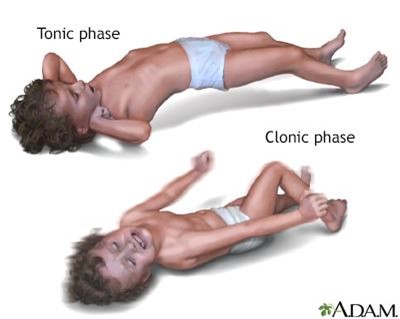A nurse at an ophthalmology clinic is providing medication teaching to a client who has open-angle glaucoma. Which of the following instructions should the nurse provide?
Apply the medication when you are experiencing eye pain
Use the medication only until the intraocular pressure returns to normal
Use the medication for approximately 10 days, then gradually taper off
Apply the medication on a regular schedule for the rest of your life
The Correct Answer is D
Choice A reason: This is incorrect because applying the medication when you are experiencing eye pain can be ineffective or harmful for treating open-angle glaucoma. Open-angle glaucoma is a chronic condition that causes increased pressure inside the eye and damage to the optic nerve, which can lead to vision loss. Eye pain is not a common symptom of open-angle glaucoma, but rather an indication of acute angle closure glaucoma, which is a medical emergency that requires immediate treatment. The nurse should instruct the client to apply the medication as prescribed, regardless of pain level, and seek medical attention if they experience severe eye pain, headache, nausea, or blurred vision.
Choice B reason: This is incorrect because using the medication only until the intraocular pressure returns to normal can cause recurrence or worsening of open-angle glaucoma. Intraocular pressure is the pressure inside
the eye that can affect eye health and vision. Normal intraocular pressure ranges from 10 to 21 mmHg, but it can vary depending on age, time of day, or other factors. The nurse should instruct the client to monitor their intraocular pressure regularly and report any changes to their provider, but not to stop using
the medication without consulting their provider first.
Choice C reason: This is incorrect because using the medication for approximately 10 days, then gradually tapering off can cause rebound or adverse effects of open-angle glaucoma. The medication for open-angle glaucoma can be either beta-blockers, such as timolol, or cholinergic agents, such as pilocarpine, which work by reducing fluid production or increasing fluid drainage in the eye. The nurse should instruct the client to follow their provider's instructions on how long and how much to use the medication and not to change or discontinue it abruptly without their provider's approval.
Choice D reason: This is correct because applying the medication on a regular schedule for the rest of your life can help control and prevent the progression of open-angle glaucoma. Open-angle glaucoma is a lifelong condition that requires consistent and continuous treatment to maintain normal intraocular pressure and prevent vision loss. The nurse should instruct the client to apply the medication at the same time every day and not to miss or skip any doses. The nurse should also teach the client how to store, handle, and administer the medication properly and safely.
Nursing Test Bank
Naxlex Comprehensive Predictor Exams
Related Questions
Correct Answer is D
Explanation
Choice A Reason: This is incorrect because turning off the lights and TV and closing the door may increase the client's anxiety and confusion. The nurse should provide adequate lighting and familiar objects to help orient the client.
Choice B Reason: This is incorrect because using restraints may increase the risk of injury, infection, and psychological distress for the client. The nurse should use restraints only as a last resort and with a physician's order.
Choice C Reason: This is incorrect because asking for a sedative may not address the underlying cause of the agitation. The nurse should use non-pharmacological interventions first, such as calming music, massage, or aromatherapy.
Choice D Reason: This is correct because identifying the cause of the agitation may help resolve it. The nurse should assess for possible triggers, such as pain, hunger, thirst, infection, or environmental factors.
Correct Answer is ["D","E"]
Explanation
Choice A Reason: This choice is incorrect. Placing the client into a supine position is not an action that the nurse should take, as it can compromise the airway and increase the risk of aspiration. The nurse should position the client on their side with their head tilted slightly forward to allow saliva and secretions to drain out of their mouth.
Choice B Reason: This choice is incorrect. Applying restraints is not an action that the nurse should take, as it can cause injury and increase agitation. The nurse should protect the client from harm by removing any objects or furniture that may cause harm and padding any hard surfaces with blankets or pillows.
Choice C Reason: This choice is incorrect. Inserting a bite stick into the client's mouth is not an action that the nurse should take, as it can cause injury and obstruction. The nurse should never force anything into the client's mouth during a seizure, as it can damage their teeth, gums, tongue, or jaw.
Choice D Reason: This is a correct choice. Loosening restrictive clothing is an action that the nurse should take, as it can improve breathing and circulation. The nurse should unbutton any tight collars, belts, or ties that may constrict the chest or neck.
Choice E Reason: This is a correct choice. Placing a pillow under the client's head is an action that the nurse should take, as it can prevent injury and provide comfort. The nurse should support the client's head with a soft pillow or cushion to prevent hitting it against any hard surfaces.

Whether you are a student looking to ace your exams or a practicing nurse seeking to enhance your expertise , our nursing education contents will empower you with the confidence and competence to make a difference in the lives of patients and become a respected leader in the healthcare field.
Visit Naxlex, invest in your future and unlock endless possibilities with our unparalleled nursing education contents today
Report Wrong Answer on the Current Question
Do you disagree with the answer? If yes, what is your expected answer? Explain.
Kindly be descriptive with the issue you are facing.
